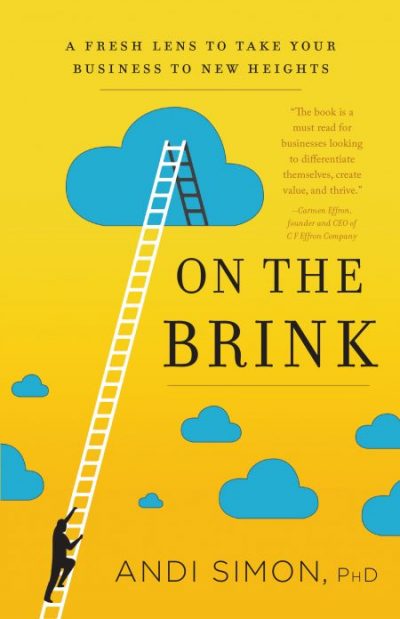Do you feel like you are following the latest “shiny object?” Chasing the noisiest new notion? Are you sleepless over decisions that sounded really smart but may not be right for your organization—or for you?
These days, the speed of new technologies and business models is accelerating like never before, but our ability to adapt to these fast-moving changes is stuck in the “way we always did it” world. Yet, humans have survived because we could adapt and evolve. Isn’t there something we can learn from our past that might help us thrive now? Fortunately, yes.
As a corporate anthropologist, I work with organizations to help them conquer change. And what I see in almost every company I work with is the same challenge: a business culture that sustains and even encourages the status quo. Add to that the brain’s natural resistance to change and you can understand how I have my work cut out for me!
3 Tools That Apply the Theory, Methods and Tools of Anthropology to the Workplace
Over my years of helping business leaders and their teams learn how to change, I’ve developed these 3 highly effective tools to help them “see, feel and think” in new ways so they can sustain their growth and build their organizations. I invite you to try them in your organization and see how they worked to bring about change for you.
1. First, Tackle Your Culture
Often HR professionals reach out to my firm, Simon Associates Management Associates, to initiate a change process after a new CEO has taken over their organization, or when the current leadership realizes that more of the same is not taking them where they need to go. Whichever the situation, HR is sure the problem lies in the company’s having the “wrong culture.” And it needs to change. But to what? And will a new one be better or worse than the current one?
What is your culture and what should it become?
For answers, I start by getting a company’s stakeholders to use a very successful tool called the Organizational Culture Assessment Instrument (OCAI). Find it here: www.ocai-online.com. Developed by Kim Cameron and Robert Quinn at the University of Michigan, the OCAI has been taken by more than 100,000 employees and 10,000 companies, large and small.
First, employees assess their company’s culture as it is today, then what they would prefer it to be in the future. These two findings quickly reveal how they view their company’s strategy, leadership, management structure and definition of success. They also shine a light on whether the current culture or the preferred one would be the best one for the organization.
For instance, I worked with a hospital system that was very controlling and hierarchical. It also had 9 unions. After doing the OCAI, the staff all wanted to see more collaboration, innovation and empowerment across the entire organization. Even the board of trustees expressed the same preferences. But when I began a culture change process with the system’s 2500 employees, we all learned quickly that saying they wanted to become more collaborative and doing so were two different things.
2. The Stories We Carry in Our Heads Need to Change
Once you begin to realize that more of the same is not going to build better results, you need a process to change how people think about their work life and habits on the job.
As humans, we have well-established habits that guide our daily activities. Those habits emerge as we grow up and create mind-maps in our brains where we “see” the world through a particular prism. To change how people interact and what they say to each other requires some new visualizations, or stories, where they can “see” things with fresh eyes.
My second change tool involves getting employees to tell their stories about how they get things done today. Next, they need to create a new story about how they will get them done in the future. For example, for that hospital client, I had the nursing staff tell their stories about how they admitted and then discharged patients. This is when the problems of their current system came to light and why and how they should collaborate better to solve those problems. It was so exciting to listen to them create a new story about what was possible. The problem was not with them — it was with their culture that was not aligned with what should be happening in their interactions with hospital patients.
How gratifying it was to see how these nurses could, indeed, change the way they did their jobs and perform exceptionally well in their new roles.
3. Overcome The Challenges of the Herd
My third change tool focuses on the leaders of different groups of people. These may be administrative leaders like managers or CEOS, or informal ones whom people follow not so much because of their position in the company but because they wield power in the herd. Either way, leaders can be real detriments to change when they become detractors undermining the cultural transformation that’s trying to emerge. If you bump up against these types of employees in your own change process, be aware that their disruptive actions may come from their fear that the new culture will undermine their power in the old.
To diffuse the situation, a good strategy is to over-communicate with these naysayers. Over-train them. Use deliberately-designed test situations to determine if they will be serious obstacles or powerful forward-movers. Then over-explain to them how their personal participation in the company’s cultural transformation and growth is crucial to the future of the organization.
What It Takes to Move an Organization Forward
Change is never easy. So make it fun. Make the undesirable desirable. Laugh a lot. Give rewards, throw parties, celebrate accomplishments. You will be amazed how all of these seemingly simple acts can actually convert reluctant performers into successful stars in your company’s new story.
If you’d like to learn more about the importance of culture and how to change it, here are 3 blogs on the subject: “Has Your Business Stalled? Maybe It’s Time For A Culture Change!,” “10 Steps to Change Your Corporate Culture” and “When It Comes To Corporate Culture, Are Men And Women All That Different?”
Remember, the times they are a-changin’ and therefore so must you.
Find a Home-Based Business to Start-Up >>> Hundreds of Business Listings.

















































